Showing Spotlights 97 - 104 of 158 in category All (newest first):
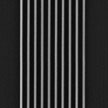 A key benefit of nanoimprint lithography is its sheer simplicity. There is no need for complex optics or high-energy radiation sources with a nanoimprint tool. Especially the nanopatterning of high refractive index optical films promises the development of novel photonic nanodevices such as planar waveguide circuits, nano-lasers, solar cells and antireflective coatings. Researchers have now developed a robust route for high-throughput, high-performance nanophotonics based direct imprint of high refractive index, low visible wavelength absorption materials.
A key benefit of nanoimprint lithography is its sheer simplicity. There is no need for complex optics or high-energy radiation sources with a nanoimprint tool. Especially the nanopatterning of high refractive index optical films promises the development of novel photonic nanodevices such as planar waveguide circuits, nano-lasers, solar cells and antireflective coatings. Researchers have now developed a robust route for high-throughput, high-performance nanophotonics based direct imprint of high refractive index, low visible wavelength absorption materials.
Jan 29th, 2013
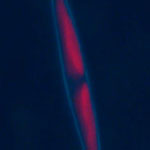 Optical tweezers offer researchers the chance to perform precise force sensing in a fluid environment. This could help to give clarity to some of the picoNewton forces that govern fundamental processes in the cell. However, currently the use of tweezers to probe biological, samples requires either direct irradiation with a laser, or the use of a tool or proxy to exert or sense very small forces. There are many instances when exposing samples to high intensity laser light is less than ideal - typically this is within a biological context. Researchers have now have shown that optical tweezers can be combined with naturally derived algae to create a stable nanoscale optical force sensor. This may enable other groups to utilize this technique to probe key force interactions that occur at the lowest end of the nanoscale force regime.
Optical tweezers offer researchers the chance to perform precise force sensing in a fluid environment. This could help to give clarity to some of the picoNewton forces that govern fundamental processes in the cell. However, currently the use of tweezers to probe biological, samples requires either direct irradiation with a laser, or the use of a tool or proxy to exert or sense very small forces. There are many instances when exposing samples to high intensity laser light is less than ideal - typically this is within a biological context. Researchers have now have shown that optical tweezers can be combined with naturally derived algae to create a stable nanoscale optical force sensor. This may enable other groups to utilize this technique to probe key force interactions that occur at the lowest end of the nanoscale force regime.
Nov 15th, 2012
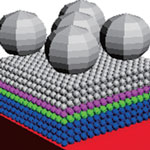 The refractive index is the property of a material that changes the speed of light and describes how light propagates through the material. The refractive index is an important property of solar cells - the higher it is, the more incident light gets reflected and is not converted to a photocurrent. Solar cell manufacturers have developed various kinds of antireflection coatings to reduce the unwanted reflective losses. The purpose of these optical thin-films is to minimize the differences in the refractive indices between the ambient medium and the solar cells. For both solar cells and LEDs, coating with nanoparticles can enhance the performance without harming the electrical properties of the devices, as can occur with etching or lithographic processing. In new work, researchers have now have not only demonstrated this advantageous feature but also provided a strategy for optimizing the types and sizes of nanoparticles for use in both solar cells and LEDs.
The refractive index is the property of a material that changes the speed of light and describes how light propagates through the material. The refractive index is an important property of solar cells - the higher it is, the more incident light gets reflected and is not converted to a photocurrent. Solar cell manufacturers have developed various kinds of antireflection coatings to reduce the unwanted reflective losses. The purpose of these optical thin-films is to minimize the differences in the refractive indices between the ambient medium and the solar cells. For both solar cells and LEDs, coating with nanoparticles can enhance the performance without harming the electrical properties of the devices, as can occur with etching or lithographic processing. In new work, researchers have now have not only demonstrated this advantageous feature but also provided a strategy for optimizing the types and sizes of nanoparticles for use in both solar cells and LEDs.
Nov 5th, 2012
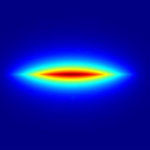 By exploiting the outstanding properties of self-organizing materials, a team of Italian scientists has investigated a new way to build a bridge between two branches of physics: 'hard matter' and 'soft matter'. This allows researchers to address specific issues towards the realization of active-plasmonics devices, where the plasmonic resonance of gold nanoparticles can be finely controlled by means of external perturbations (electrical field, optical field, temperature). In place of a static approach - e.g. varying particles size, materials, etc. - the researchers used liquid crystals as active surrounding medium. This approach represents a 'scientific wedding' between the fascinating worlds of soft matter and plasmonics worlds.
By exploiting the outstanding properties of self-organizing materials, a team of Italian scientists has investigated a new way to build a bridge between two branches of physics: 'hard matter' and 'soft matter'. This allows researchers to address specific issues towards the realization of active-plasmonics devices, where the plasmonic resonance of gold nanoparticles can be finely controlled by means of external perturbations (electrical field, optical field, temperature). In place of a static approach - e.g. varying particles size, materials, etc. - the researchers used liquid crystals as active surrounding medium. This approach represents a 'scientific wedding' between the fascinating worlds of soft matter and plasmonics worlds.
Oct 22nd, 2012
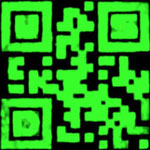 Quick Response Codes, or QR codes for short, are two-dimensional matrix codes that can hold 100 times more data than a traditional barcode. QR codes have rapidly gained popularity and are now very commonly used in various products, because of fast readability and large storage capacity. Applying the concept of QR codes to security printing applications - think banknotes - researchers have now developed an invisible QR code made from nanoparticles. They applied upconverting inks to print QR codes on paper and transparent tape, using an aerosol jet direct writing machine. They produced QR codes with embedded security characters using blue and green upconverting inks. These codes are invisible to the naked eye but produce single- and multi-color upconversion luminescence images under near-infrared excitation which can be read and decoded with an unmodified smart phone.
Quick Response Codes, or QR codes for short, are two-dimensional matrix codes that can hold 100 times more data than a traditional barcode. QR codes have rapidly gained popularity and are now very commonly used in various products, because of fast readability and large storage capacity. Applying the concept of QR codes to security printing applications - think banknotes - researchers have now developed an invisible QR code made from nanoparticles. They applied upconverting inks to print QR codes on paper and transparent tape, using an aerosol jet direct writing machine. They produced QR codes with embedded security characters using blue and green upconverting inks. These codes are invisible to the naked eye but produce single- and multi-color upconversion luminescence images under near-infrared excitation which can be read and decoded with an unmodified smart phone.
Oct 8th, 2012
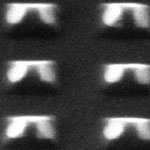 Reducing the size of photonic and electronic elements is critical for ultra-fast data processing and ultra-dense information storage. The miniaturization of a key, workhorse optical instrument - the laser - is no exception. Coherent light sources at the nanometer scale are important not only for exploring phenomena in small dimensions but also for realizing optical devices with sizes that can beat the diffraction limit of light. Researchers at Northwestern University have now found a way to manufacture single laser devices that are the size of a virus particle and that operate at room temperature. They show that subdiffraction nanoresonators based on metallic bowties, when coupled to a gain material, can generate coherent and directional light emission.
Reducing the size of photonic and electronic elements is critical for ultra-fast data processing and ultra-dense information storage. The miniaturization of a key, workhorse optical instrument - the laser - is no exception. Coherent light sources at the nanometer scale are important not only for exploring phenomena in small dimensions but also for realizing optical devices with sizes that can beat the diffraction limit of light. Researchers at Northwestern University have now found a way to manufacture single laser devices that are the size of a virus particle and that operate at room temperature. They show that subdiffraction nanoresonators based on metallic bowties, when coupled to a gain material, can generate coherent and directional light emission.
Oct 4th, 2012
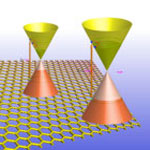 The unique energy band structure in graphene allows it to actively respond to photons with ultra-wide spectrum range - from the visible to the infrared - with record strong inter-band transition efficiency. As a consequence, graphene based ultra-fast photonics has been rising fast in various aspects of ultra-fast photonics - an ultra-fast graphene photo-detector with bandwidth exceeding 500 GHz; a broadband graphene optical modulator; a broadband graphene polarizer etc, which all benefit from the material's broadband photonics property. Researchers have now experimentally demonstrated for the first time that graphene, besides its well-known optical saturable absorption, also shows microwave and terahertz saturable absorption. The results lead to the expectation that graphene may show potential applications in microwave photonics.
The unique energy band structure in graphene allows it to actively respond to photons with ultra-wide spectrum range - from the visible to the infrared - with record strong inter-band transition efficiency. As a consequence, graphene based ultra-fast photonics has been rising fast in various aspects of ultra-fast photonics - an ultra-fast graphene photo-detector with bandwidth exceeding 500 GHz; a broadband graphene optical modulator; a broadband graphene polarizer etc, which all benefit from the material's broadband photonics property. Researchers have now experimentally demonstrated for the first time that graphene, besides its well-known optical saturable absorption, also shows microwave and terahertz saturable absorption. The results lead to the expectation that graphene may show potential applications in microwave photonics.
Oct 2nd, 2012
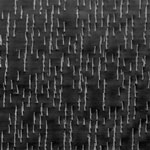 The size of pixels is one of the key limiting features in the state of the art of holographic displays systems. Holography is a technique that enables a light field to be recorded and later reconstructed when the original light field is no longer present, due to the absence of the original objects. The resolution and field of view in these holographic systems are dictated by the size of the pixel, i.e. the smallest light scattering element. To address the limitations of current holographic systems due to their pixel size, a research team set out to use nanostructures as the smallest possible light-scattering elements for producing holograms. They harnessed the extraordinary conductive and light scattering abilities of nanotubes and patterned an array of carbon nanotubes to produce a high resolution hologram.
The size of pixels is one of the key limiting features in the state of the art of holographic displays systems. Holography is a technique that enables a light field to be recorded and later reconstructed when the original light field is no longer present, due to the absence of the original objects. The resolution and field of view in these holographic systems are dictated by the size of the pixel, i.e. the smallest light scattering element. To address the limitations of current holographic systems due to their pixel size, a research team set out to use nanostructures as the smallest possible light-scattering elements for producing holograms. They harnessed the extraordinary conductive and light scattering abilities of nanotubes and patterned an array of carbon nanotubes to produce a high resolution hologram.
Oct 1st, 2012
 A key benefit of nanoimprint lithography is its sheer simplicity. There is no need for complex optics or high-energy radiation sources with a nanoimprint tool. Especially the nanopatterning of high refractive index optical films promises the development of novel photonic nanodevices such as planar waveguide circuits, nano-lasers, solar cells and antireflective coatings. Researchers have now developed a robust route for high-throughput, high-performance nanophotonics based direct imprint of high refractive index, low visible wavelength absorption materials.
A key benefit of nanoimprint lithography is its sheer simplicity. There is no need for complex optics or high-energy radiation sources with a nanoimprint tool. Especially the nanopatterning of high refractive index optical films promises the development of novel photonic nanodevices such as planar waveguide circuits, nano-lasers, solar cells and antireflective coatings. Researchers have now developed a robust route for high-throughput, high-performance nanophotonics based direct imprint of high refractive index, low visible wavelength absorption materials.
 Subscribe to our Nanotechnology Spotlight feed
Subscribe to our Nanotechnology Spotlight feed





